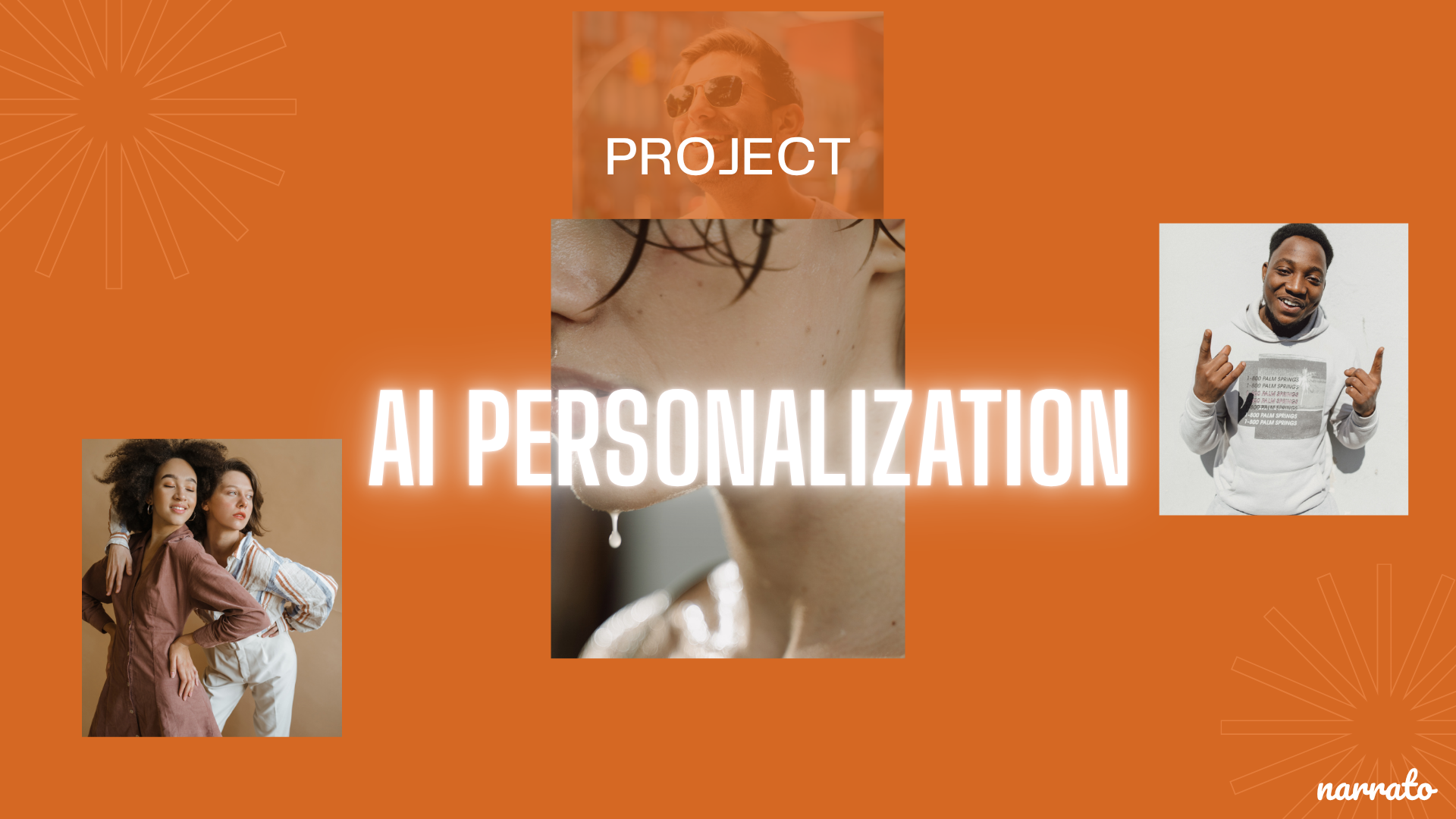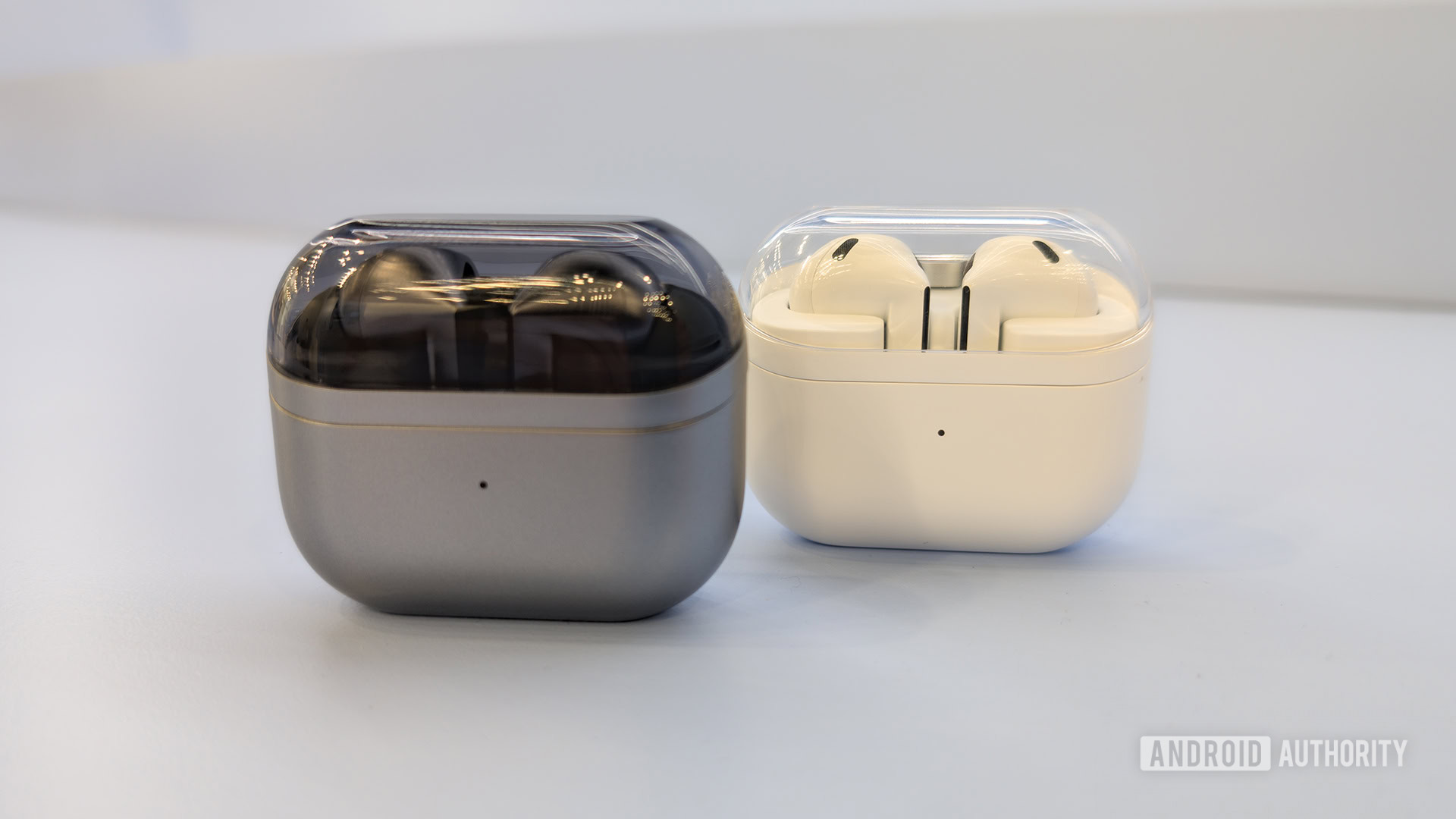Mobile-first consumers expect convenient, personalized experiences at their fingertips. But delivering tailored experiences to diverse user segments remains a significant challenge, one that AI is helping solve. See what AI-powered personalization looks like and how to implement it in your marketing strategy.
Personalization matters for B2B and B2C sales. AI drives personalization at scale.
How to use AI agents to deliver personalized experiences

Personalization matters for B2B and B2C sales. AI drives personalization at scale.
Brands that personalize their products, services, offers, insights, and marketing communications are more likely to report stronger growth than those that don’t prioritize personalizing these aspects of the brand experience.
In industries like retail, eCommerce, finance, hospitality, and technology, where customer relationships are typically short, personalized marketing is a critical driver of acquisition and retention. And where buying committees and highly consultative sales are the norm, such as manufacturing and SaaS, tailoring communications to various cohorts is business as usual.
Brands with a strong personalization strategy speak to the needs of each of their cohorts across buying stages, touchpoints, and beyond sales. But with customer growth and geographical expansion, personalization inevitably becomes more complex, more so for brands that don’t make personalization a priority and realize its value belatedly. AI’s powerful ability to personalize quickly and at scale can help personalization leaders and laggards alike.
What is AI personalization in marketing?
AI personalization in marketing has largely to do with creating content tailored to each audience segment using an AI marketing platform. AI ingests your audience data to create content that speaks to each segment’s interests, preferences, and habits. It learns your communication style — your brand voice and how you tone it up or down on various social media channels — to sound like you. And it uses your vast reserve of content — your whitepapers, case studies, blogs, webinars, etc. — as a base to create content that contains your insights. Creating at unmatchable speed and to a large degree of accuracy, AI eases the constraints and bottlenecks holding your marketing team back.
Why use AI to personalize marketing content?
AI can generate audience-personalized marketing content orders of magnitude faster than us. Picture generating audience-personalized variations of your car ad within seconds. An in-depth long-form blog drafts with relatable talking points and relevant insights for a specific user segment. A video ad with relevant, AI-picked scenes that captivate your target audience. AI thinks contextually, writes logically, crafts in clear language and clean grammar, and requires relatively simple instructions and basic technical understanding to produce good outputs.
Marketers using AI for personalization can create without constraints, beat creative fatigue as needed, and save more time for strategy and creative development. With the right inputs, AI can create quality content. But it can’t add nuances and insights that come naturally to humans. So, copy, marketing, and legal teams will need to review and enhance AI content before it can be published. Given AI’s quality and accuracy, this is usually a quick process and offers the following benefits:
Increased engagement: AI creates relevant content that motivates users to engage with it — read longer, click more, share, comment, and convert.
Better content optimization: AI creates ad, caption, image, and landing page variations within seconds, facilitates rapid A/B testing for continuous, more frequent, and more effective optimization for various cohorts.
Real-time feedback: AI systems learn from historical performance data to provide immediate feedback on what content resonates and what doesn’t. For example, Typeface’s AI calculates a performance score for blogs combining SEO, personalization, and branding metrics.


Create personalized content on Narrato
AI writing assistant Narrato drafts personalized content based on descriptions of your product/service, target customers, product/service benefits, and keywords. It can create copy in different tones to suit the vibe of various marketing and social media channels.
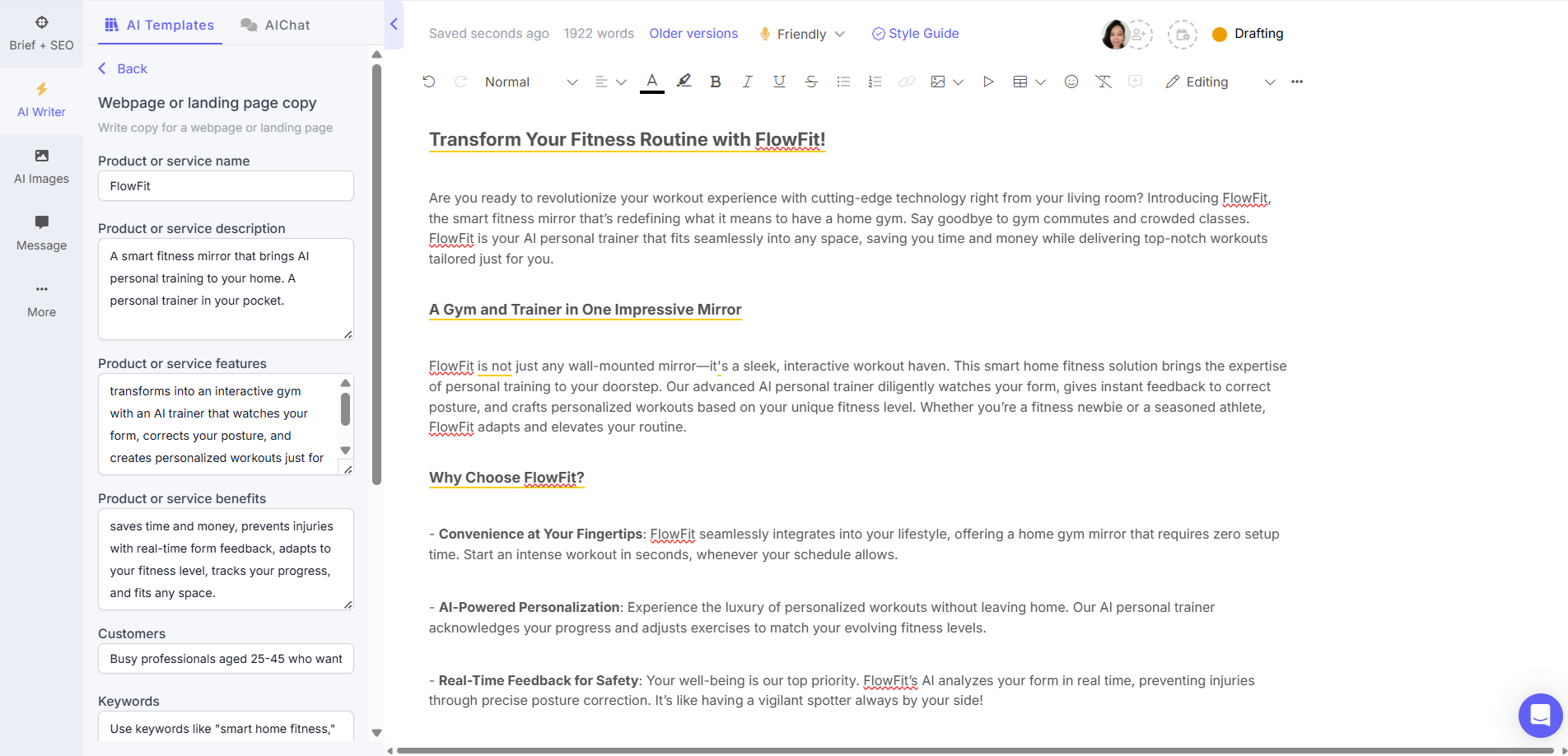

AI doesn’t create perfect first drafts. Human review of AI-generated content is essential to ensure it meets brand standards. While the best AI tools will integrate all talking points and create engaging narratives, they can’t add the nuances and rich contexts that come easily to you. AI is also known for certain typical sentence constructions and phrases, which can be addressed with suitable guidelines within AI prompts or edited during human reviews.
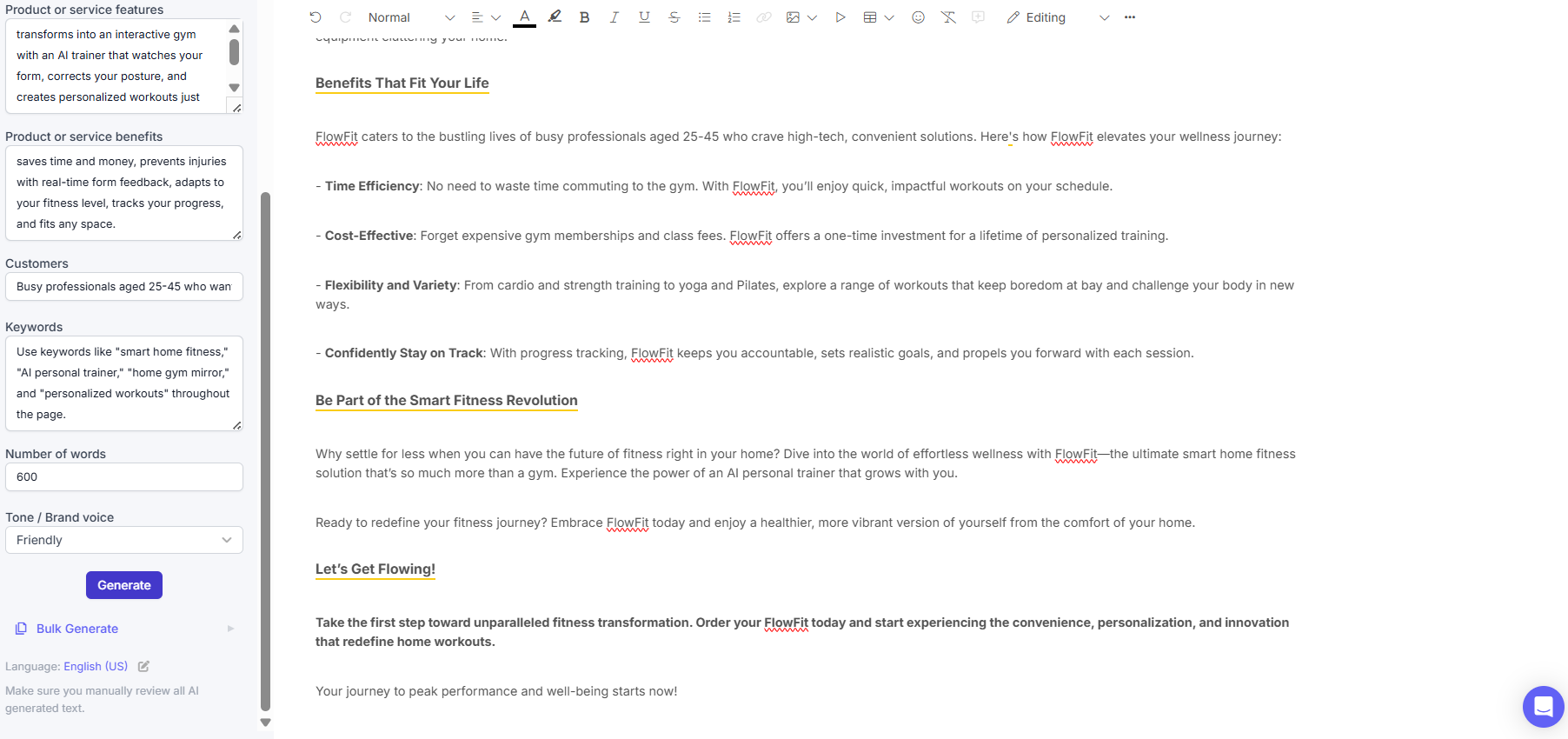

Collaborating on reviews and approvals on Narrato is seamless. You can leave comments within content tasks and @mentions that send out email notifications to team members.
Narrato has helped businesses of all sizes scale content creation and drive better customer experiences with personalized AI storytelling. It offers a vast library of AI templates for all types of brand content (e.g., blogs, social media posts, landing pages, emails, ads, summaries, and product descriptions). Want to create detailed blog outlines and SEO briefs, with built-in readability, plagiarism, and SEO scores? Narrato is a great addition to your marketing automation tools.
How enterprises can use AI agents to deliver personalized experiences
AI uses your customer data to create content that addresses the needs and preferences of your user segments. It’s foremost a tool to scale personalization, which is difficult with manual efforts alone. That makes it particularly useful to organizations serving a large and diverse customer base, and integrating personalization across multiple channels and touchpoints.
Here’s a glimpse into how to use AI for personalization.
What can you personalize?
AI can create audience-specific copy and visuals. An AI marketing platform trained on your verbal and visual identities will create content that consistently reflects these aspects of your brand personality and aesthetics. Further, AI can ingest your brand guidelines (think grammar rules, numbers, dates, legalese, etc.), and apply them during generations. What’s more, AI agents like Typeface’s Brand Agent can validate content against guidelines and flag inaccuracies.
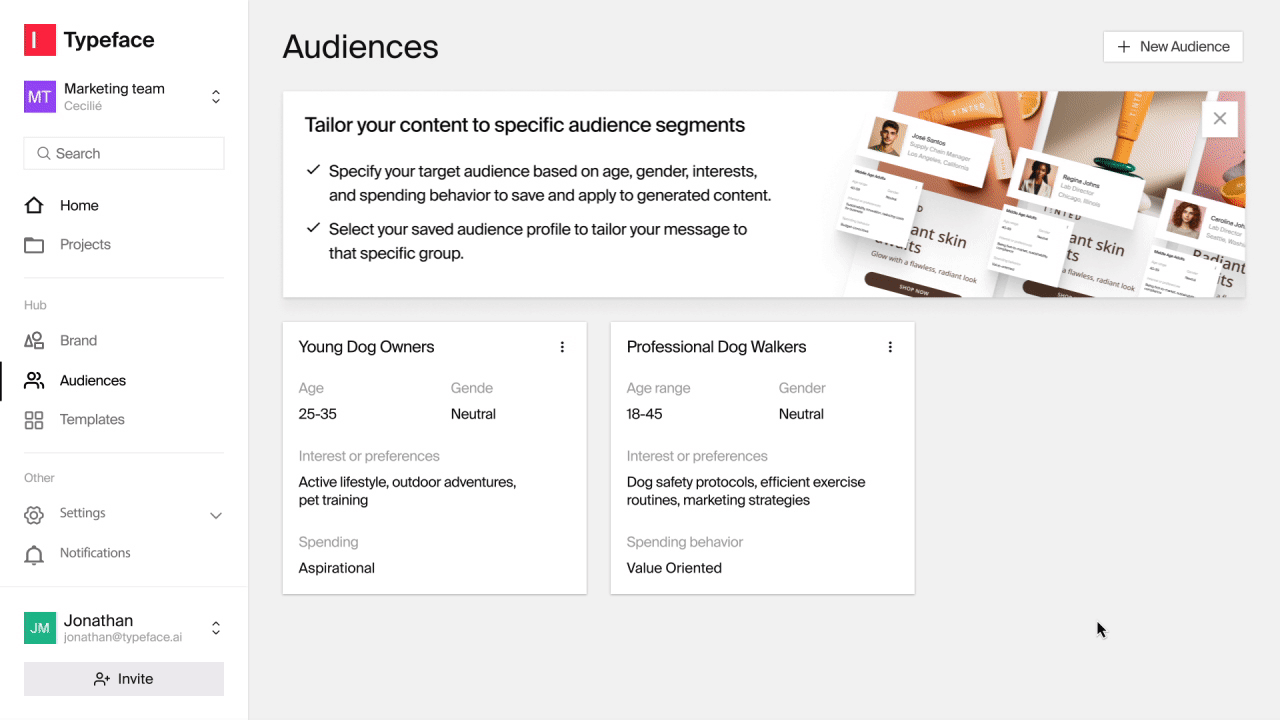

How does it work?
- AI agents learn from your content creation guidelines and audience data
- AI workflows (creation → review → publishing) can be customized to review your existing processes
- The human always stays in the loop to refine AI outputs and produce at a dramatically faster rate
How to implement AI for marketing?
Rather than scattered tools and workflows, an enterprise AI marketing platform is the best bet for personalizing securely, at scale, and with repeatable workflows.
Consider this process to create a plan for integrating AI content personalization into your marketing workflows:
Select an AI vendor
Include these questions in your AI vendor evaluation:
- Supports secure integrations and compliance?
- Offers hands-on onboarding support?
- Shares realistic implementation plans?
- Has experience with marketing-specific use cases?
- Understands enterprise governance and compliance requirements?
Set up your Brand Kit
On Typeface, your Brand Kit is the single source of truth about your user segments and brand guidelines, including voice, tones, values, language, compliance, and visual styles. Here’s how you can set it up:
- Connect your existing platforms, such as your customer data platform, to Typeface
- Upload your brand guideline documents
- Upload a few examples of your best content and images to train AI
- Upload approved brand assets and templates to use as-is or serve as reference content during AI generations
First phase (1-30): Build testing foundation
- Assess AI readiness
- Form an implementation team of executive sponsor, marketing ops team, end users (e.g., copywriters or campaign leads), and IT representative. If you lack in-house AI expertise, bring in an external consultant.
- Identify a low-effort, high-value AI pilot project
- Define success metrics (e.g., content production time per asset)
Second phase (31-60): Develop and test
- Use real marketing data to train and configure AI. Upload brand guidelines, approved assets, and training data.
- Define what AI will do and what users will be responsible for
- Create feedback loops
Third phase (61-90): Evaluate and expand
- Measure true impact (e.g., brand consistency, reallocation of human effort to more strategic tasks)
- Define the governance model that keeps things safe, scalable, and accountable
- Identify more teams and use cases to scale to
Tips to integrate AI successfully into your content personalization processes?
- Start with a low-effort, high-impact use case, such as personalizing ad captions or blog introductions. Small wins build confidence and motivate greater adoption.
- Iterate prompts to identify those that generate the best responses. Make them accessible for use by team members.
- Give AI enough information to create like your team. Training AI on your data is usually a one-time effort and the payoff is on-brand, compliant content on all channels and touchpoints.
- Keep in touch with team sentiment around AI use. For example, are teams able to focus on higher-value activities or test more often? Are they able to work easily with AI agents or is there room for a lot of improvement?
- Scale what works and define plans to expand AI personalization across customer journeys and your teams. If pilot tests fail, revise and retest.
- Stay on top of the business results from AI personalization. Quantifying true impact strengthens belief in AI and encourages its ongoing use.
- Don’t hand over the reins to AI. Maintain human oversight at all review points. AI will speed up and streamline reviews, even assist with further edits, if any.
Get started with AI-powered personalization
Marketing personalization is critical for sales yet challenging to implement at scale. Ideating and creating for diverse cohorts throughout the purchase lifecycle is not just effort- and time-intensive but can also lead to creative fatigue and impact campaign quality. With assistance from AI, teams can break free from constraints and create better, faster, and extensively. Human experience and emotional intelligence will remain indispensable for marketing, and AI agents will serve as capable crew members to human captains navigating the marketing skies.
See what it’s like to work with AI for — explore Narrato on a free trial now.



